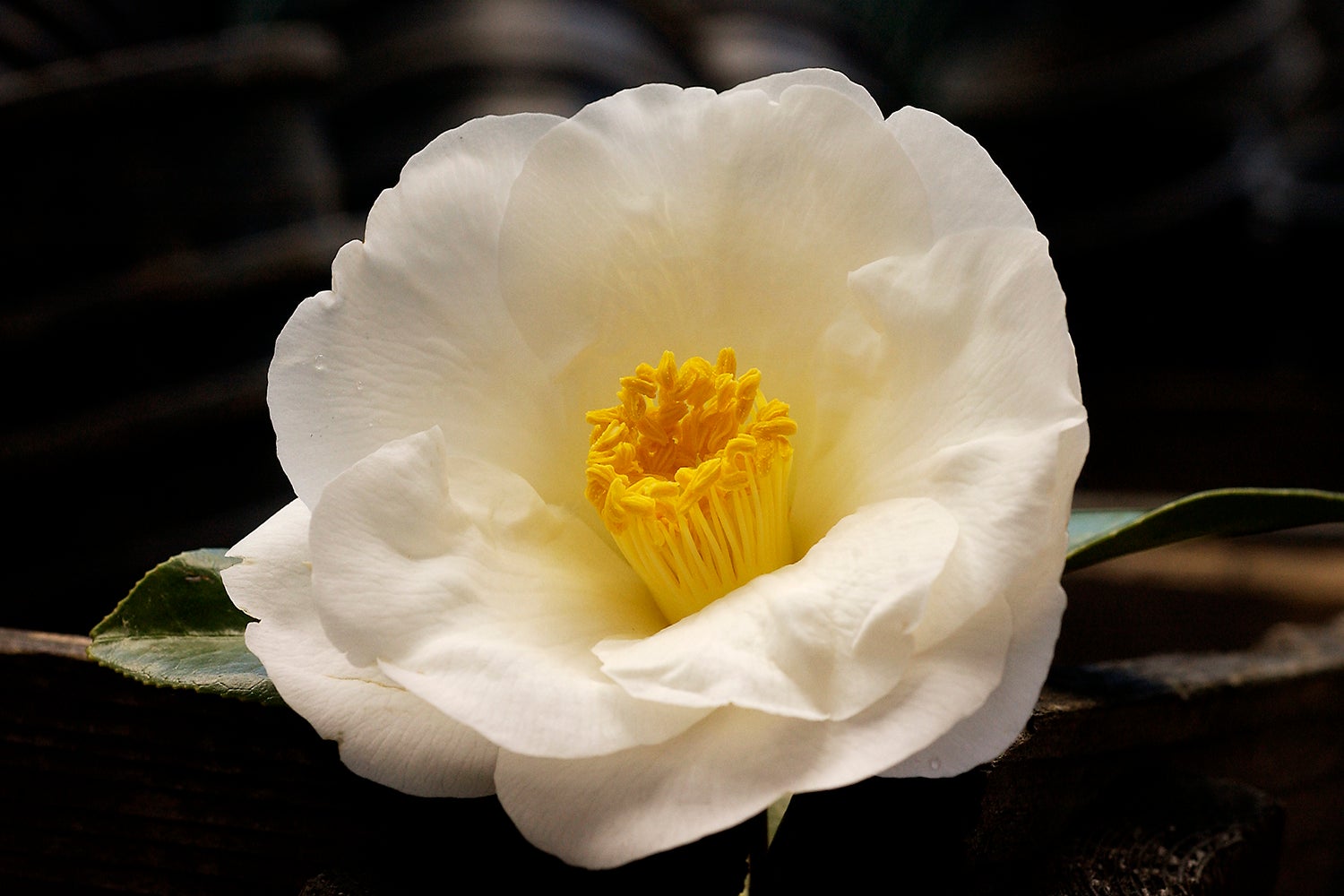Enthusiasm for the camellia, a flowering shrub, has strong roots on the Peninsula, where a local chapter for growers was founded more than four decades ago. One variety is named after Redwood City, and soon the camellia will find sanctuary behind Memorial Church.

Although many of the camellia plants that are destined for the grounds behind Memorial Church were stripped of their buds, some of them are flowering in their temporary home in the nursery at Bonair Siding. Grounds Services received the plants two weeks ago and are awaiting final agreement on the garden’s design and timing. (Image credit: L.A. Cicero)
As part of the university’s ongoing water conservation efforts, Grounds Services will replace the lawns behind Memorial Church with a batch of rare and storied camellias donated by an alumnus in Woodside. Specifically, the new garden will cover 4,500 square feet and save about 1.87 million gallons of water per year, said Grounds Supervisor Bob Murphy.
Crews have done soil tests and other preliminary work, and the Campus Planning and Design Office is meeting with representatives from the Office for Religious Life and Ground Services this week to discuss precisely how the garden will look and when major work will start. Plantings are expected to begin within the next two weeks.
“They’re going to be pretty striking. They’re going to jump out at you,” Murphy said. “There are a few that are as big as trees.”
Camellias were first grown in California in 1852 and became a common yard plant in the 1950s and ’60s. Growing into shrubs or trees of up to 20 feet in height, they flower for eight to nine months during the year. More than 260 species have been identified, and cross-pollination over the years has resulted in thousands of recognized hybrids.
The 59 plants donated to Stanford – many of them one-of-a-kind hybrids – came from a 15-acre private property owned by Marjorie O’Malley, who collected and hybridized camellias over a span of 50 years. They sat under tall oak trees twice their age. The garden became popular through horticultural events that the O’Malleys hosted and through annual tours led by the San Francisco Peninsula Camellia Society.

As part of the university’s ongoing water conservation efforts, Grounds Services will replace the lawns behind Memorial Church with a batch of rare and storied camellias donated by an alumnus. (Image credit: L.A. Cicero)
When O’Malley died last year, the property was sold twice, eventually going to Bill Davidow, who earned a doctorate in electrical engineering from Stanford. He and his wife, Sonja, plan to restore the oak landscape but also want to give groups and individuals the chance to continue enjoying the specimens.
The society contacted the Davidows and helped them to place the plants in highly visible locations where they will be well nurtured. Aside from those donated to Stanford, the bulk of the collection – about 190 plants – went to the Strybing Arboretum in San Francisco’s Golden Gate Park.
“When we were looking for locations, a couple of us in the society thought that [Stanford] would be a good place,” said Denise Kupperman, president of the society, a local chapter of the International Camellia Society. “It’s very centrally located, and it’s also a historical landscape.”
Grounds Services received the plants about two weeks ago and are awaiting a final decision from university planners. Many of the specimens were tagged for identification and stripped of their buds for the move. Some may bloom this spring, but their full potential will be evident around this time next year.
O’Malley’s original collection included varieties with flowers that ranged from a deep, glossy red to crayon yellow to blushing pink. They had names such as “Black Magic,” “Feathery Touch,” “Golden Dome” and “Irish Mist.” Among the varieties to be planted behind the church are “White Nun” and “Notre Dame” – named after O’Malley’s alma mater.
Kupperman said the society will supplement the donation with several specimens of Camellia sinensis – the leaf buds of which are commonly used for tea. Her group plans to hold a community pruning workshop in Stanford’s camellia garden when the plants show off their red, white and pink flowers next spring.
Stanford also decreases water consumption with low-flow toilets and showerheads, as well as through used-water recycling programs. Grounds Services has plans to remove or reduce lawns in several other locations around campus and supplement them with more water-efficient plants.
“Camellias don’t take as much water as turf does,” Murphy said. “They will probably take 50 to 60 percent less water than the turf was taking.”